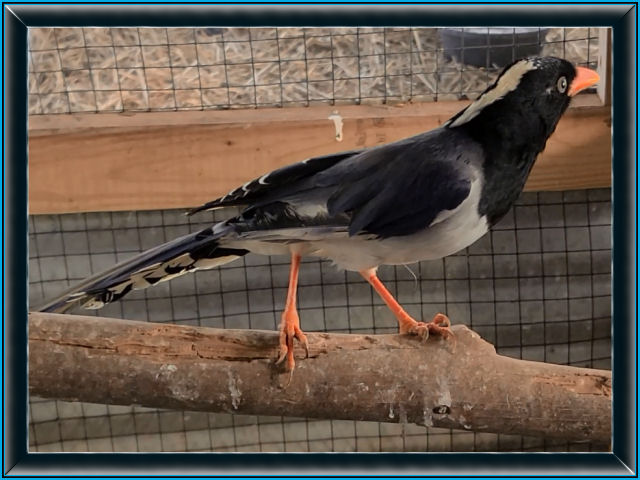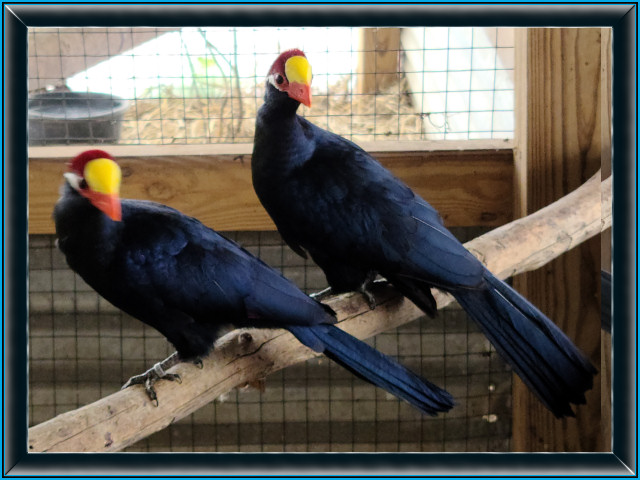Other Birds
Violet Turaco
(Tauraco violaceus)
Click the image to view additional pictures
| Common Name: | Violet Turaco |
| Scientific Name: | Tauraco violaceus |
| Clutch Size: | The female lays 2 eggs in a flimsy tree platform nest |
| Incubation Period: | 25 to 26 days |
| Habitation: | It is resident in West Africa, and has an extremely large range from Senegal through to the Nigeria, with an isolated population in Chad and Central African Republic. It occurs in tropical savannas, wetlands, woodlands and forests.) |
| Conservation Status: | Least Concern |
Blue Crowned Pigeon
Victorian Crowned Pigeon
Click the image to view additional pictures
Indian Ringneck
Click the image to view additional pictures
Plain Chachalaca
(Ortalis vetula)
Click the image to view additional pictures
| Common Name: | Plain Chachalaca |
| Scientific Name: | Ortalis vetula |
| Clutch Size: | 2 to 4 eggs |
| Incubation Period: | 24 to 25 days |
| Habitation: | The Plain Chachalaca occupies a wide range of habitats, including primary forest, secondary forest, forest edge and riverine forest, thorny bush-scrub, and shrubland. It is also found in human modified habitats such as orchards, suburban parks and gardens and croplands.Unlike other cracids, it is able to adapt to the scrubland that arises after the clearing of tropical rainforest. It can be found from sea-level to 1,850 m (6,070 ft) |
| Conservation Status: | Least Concern |
Kookaburra (Laughing Kookaburra)
(Dacelo novaeguineae)

| Common Name: | Laughing Kookaburra |
| Scientific Name: | Dacelo novaeguineae |
| Clutch Size: | 2 to 4 eggs |
| Incubation Period: | 24 to 29 days |
| Habitation: | The Kookaburra is native to Australia and New Guinea. It is found in habitats ranging from humid forest to arid savanna, as well as in suburban areas with tall trees or near running water. |
| Conservation Status: | All Kookaburra species are listed as Least Concern. Australian law protects native birds, including kookaburras. |
Red Legged Seriema
(Cariama cristata)
Click the image to view additional pictures
| Common Name: | Red Legged Seriema |
| Scientific Name: | Cariama cristata |
| Clutch Size: | 2 to 3 eggs |
| Incubation Period: | 24 to 30 days |
| Habitation: | The Red Legged Seriema prefers grassland habitat to any other. Though it likes to inhabit lush meadows near rivers, it will not readily move into wetlands or crop fields.[13] It frequents semi-open and fairly dry areas such as thorny scrub and semi-arid woodland regions, savannas and ranchlands, and also hilly grasslands near wooded areas. This species is very typical in Caatinga, Cerrado and Chaco |
| Conservation Status: | Least Concern |
Red Billed Blue Magpie
(Urocissa erythroryncha)

| Common Name: | Red Billed Blue Magpie |
| Scientific Name: | Urocissa erythroryncha |
| Clutch Size: | 3 to 5 eggs |
| Incubation Period: | N/A |
| Habitation: | The red-billed blue magpie occurs in a broad swathe from the northern parts of the Indian Subcontinent, and further eastwards. It ranges from the Western Himalayas eastwards into Myanmar, Cambodia, Laos and Vietnam and through central and eastern China to southwest Manchuria, in evergreen forest and scrub in predominantly hilly or mountainous country. It has adapted to urban habitat and can be seen in large cities in China such as Beijing and Hong Kong. They nest in trees and large shrubs in a relatively shallow nest. |
| Conservation Status: | Least Concern |
Moluccan Cockatoo
"Sinbad"
Umbrella Cockatoo
"Clarabelle"






